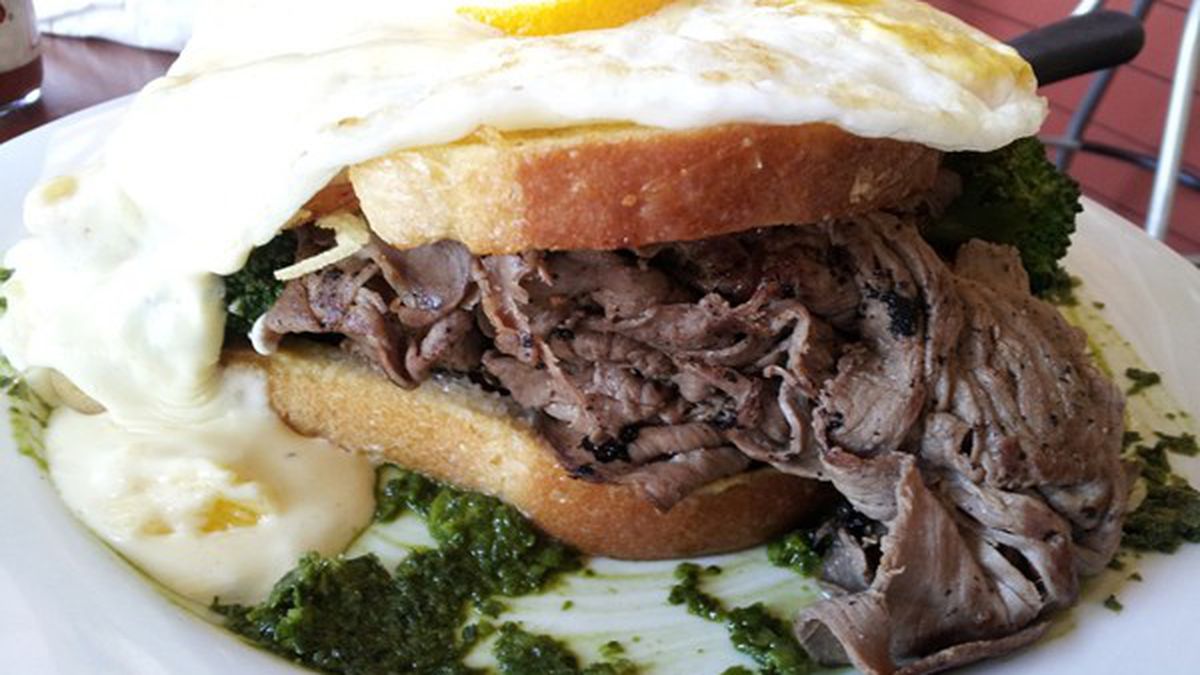Shop often enough at Bay Area farmers’ markets and you can’t help but start to get a sense of the seasons: sugar snap peas in the spring, tomatoes in the late summer, hachiya persimmons for a few glorious weeks in the fall.
But if you’re a carnivore, you probably think of beef as a year-round indulgence — one that’s restricted more by your cholesterol level or bank account than by what month it happens to be.
Not so, says Bill Niman, whose Bolinas-based company, BN Ranch, rolled out this year’s first shipments of 100-percent grass-fed, seasonally slaughtered beef earlier this month. It’s a project Niman has been working on for about a decade, but many Bay Area diners and shoppers are just now starting to wrap their heads around the concept.
In the arena of sustainably raised meat, there aren’t many names that command more respect than Niman’s. The company he founded in the 1970s, Niman Ranch, was built on the simple principle that meat raised in a humane and natural manner will also taste better. No longer solely the purview of the Chez Panisses of the world, the Niman Ranch brand name now gets flaunted — a kind of we-use-good-meat stamp of approval — even at mom-and-pop burger joints and taco shops.
Niman famously split from the company in 2007, and he didn’t wait long before starting his new venture, BN Ranch, selling mostly pasture-raised goats and turkeys at first. Five years ago he started selling a small quantity of beef — just to Chez Panisse, basically — but has been slowly expanding the operation ever since.
“I wouldn’t buy a tomato in January, and I wouldn’t buy strawberries in January,” Niman said. By that same logic, he says, he wouldn’t buy grass-fed beef from Northern California in March.
According to Niman, the process of raising healthy, well-marbled beef is closely tied to the seasonality of grasses. When grasses are mature and have fully-formed seeds, they become carbohydrates. It’s as though the cattle eat pasta for two months of the year after ten months of eating tofu, Niman explained.
The carbs get turned into intermuscular fat — marbling, in other words. That’s what makes beef delicious. Once you get into November, the cattle’s bodies start to consume that fat, like bears in hibernation.
“The idea that you can kill grass-fed beef in December, January, February, March — it’s not possible, in my opinion,” Niman said.
Historically, beef producers have gotten around this problem by bringing the cattle into feedlots in the months leading up to slaughter, fattening the animals up with corn or other grains to keep the quality of the meat high. And in the post-World War II era, Americans have gotten used to eating this “grain-finished” beef.
Consequently, even though wholly-grass-fed beef has gotten positive attention for its health benefits and environmental impact, it has also gotten a bad rap — flavor-wise — in some corners. Often, you’ll hear complaints that it tastes gamey or “grassy,” or that it’s too lean.
Niman says, quite frankly, that’s because a lot of the people raising grass-fed beef aren’t doing it properly. And the slaughtering of cattle during the winter months, when the animals are in poor condition, is a big part of the problem.
According to Niman, at any given geographic location there’s only a few weeks’ time when the meat will be at its peak. In California, Niman can extend that window by moving his cattle in pursuit of the good grass, starting in the Sierras, moving out west, and then heading up into the high country. All told, the season stretches from May to November.
Of course, the proof is in the pudding: Diners should decide for themselves if Niman’s beef is as good as he says. This year, more East Bay vendors than ever are selling BN Ranch beef, and it isn’t just high-end places like Chez Panisse.
Café Rouge often has BN Ranch steaks available as daily specials — as of this printing, the online menu lists a “BN Ranch top sirloin brochette.” According to Chuck Traugott, head butcher at the restaurant’s on-site meat market, BN Ranch beef is the only grass-fed beef he sells. And he’s simply stopped carrying grass-fed beef out of season.
Saul’s Deli uses BN Ranch beef for its hot dogs, burgers, and roast beef. If you’re lucky, you might even stumble onto a batch of house-smoked pastrami made with BN Ranch navel — a cut available in too-limited quantities for the restaurant to use all the time.
And at The Sunny Side Café — with locations in Albany and Berkeley — chef Aaron French is using BN Ranch ground beef for his burgers, and other cuts in his weekly brunch specials: For instance, a variation on his signature savory French toast sandwich, the Alameda, featured a BN Ranch sirloin roast.
The Pasta Shop also sells BN Ranch roast beef. For home cooks, Baron’s Meats & Poultry, in Alameda, carries various BN Ranch cuts, including ground beef, stew meat, roasts, and a variety of steaks. Given the labor-intensive process, BN Ranch beef isn’t inexpensive, but Niman says the prices are on par with other grass-fed beef.
If you’ve yet to try seasonal grass-fed beef, now is a good time to check it out: Niman says the meat hitting the shelves in early July will be the best of the best in terms of marbling and maturity.














